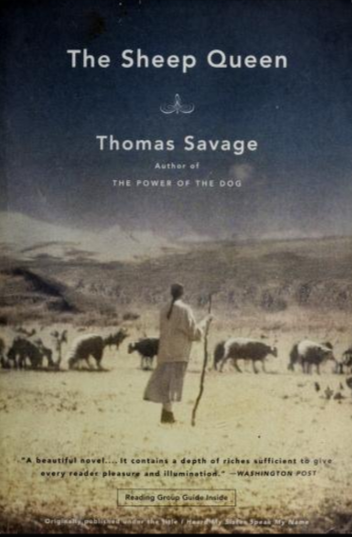By Suzanne
Norquist
“I believe in
myself.” That’s how Emma Yearian responded when the banker asked her why he
should lend her a large sum of money for hay during a drought. She seems to have
built her life on this statement. A reporter once dubbed her the “Sheep Queen
of Idaho,” and the title stuck. Her story inspired one of her grandsons to
write a semi-biographical novel titled The Sheep Queen.
Emma Russell
was born in Leavenworth, Kansas, in 1866. Soon after, her parents moved the
family to Illinois. There, she attended high school and Southern Illinois
Normal College. Upon graduation, she went West and eventually found herself in
the Lemhi Valley in Idaho, along the Montana border.
She married him
in 1889, and the couple set up housekeeping in a log cabin with a sod roof. They
had six children, and she decided to earn money for their education. She
noticed that sheep ranchers made more money than cattle ranchers. So, she tried
to convince Thomas to give up the cattle and buy sheep. Instead, he allowed her
to add sheep to the existing stock.
Emma ran the
operation, and everyone thought of it as hers, although Thomas managed the
cattle portion of the business. In 1910, they replaced the little cabin with a
modern six-bedroom house, including electric lights and indoor plumbing.
She followed
national events and predicted World War I years before it started. Realizing
the army would need wool for uniforms, she took out another loan to increase production.
Then she bought sheep with extra-thick coats. The investment paid off when the
United States joined the war.
However,
ranching wasn’t enough for her. She participated in professional organizations
and became a state legislator, running as a Republican even though her husband
was a Democrat. She served one term in office.
In her later
years, she continued to work with the sheep, using a walking stick. In 1951,
she passed away at the age of eighty-five.
Her legacy
lives on because she believed in herself and lived life to its fullest.
***
"Mending Sarah’s Heart" in the Thimbles and Threads Collection
Four historical romances celebrating the arts of sewing and quilting.
Mending Sarah’s Heart by Suzanne Norquist
Rockledge, Colorado, 1884
Sarah seeks a quiet life as a seamstress. She doesn’t need anyone, especially her dead husband’s partner. If only the Emporium of Fashion would stop stealing her customers, and the local hoodlums would leave her sons alone. When she rejects her husband’s share of the mine, his partner Jack seeks to serve her through other means. But will his efforts only push her further away?
Suzanne Norquist is the author of two novellas, “A Song for Rose” in A Bouquet of Brides Collection and “Mending Sarah’s Heart” in the Thimbles and Threads Collection. Everything fascinates her. She has worked as a chemist, professor, financial analyst, and even earned a doctorate in economics. Research feeds her curiosity, and she shares the adventure with her readers. She lives in New Mexico with her mining engineer husband and has two grown children. When not writing, she explores the mountains, hikes, and attends kickboxing class.







Thanks for posting today, and Merry Christmas! I love stories like this. How did you run across this one?
ReplyDeleteThanks Connie. And Merry Christmas. I have a book of Wild West Women. I get the idea from there and then look for more information. If her grandson hadn't written the book, I think her story would have been lost.
Delete